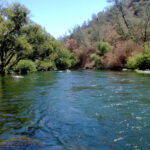Experiencing that uncomfortable plugged-ear sensation after a flight? You’re not alone. Many travelers suffer from what’s commonly known as “airplane ear,” or ear barotrauma, after changes in altitude. This happens because the air pressure in your middle ear and the environment are not balanced. Fortunately, there are several effective techniques you can use to pop your ears and relieve that pressure quickly. This guide will walk you through proven methods to help you find relief and understand why this happens in the first place.
Understanding Airplane Ear and Why Your Ears Get Blocked
Airplane ear occurs when the air pressure in your middle ear doesn’t equalize with the pressure in the environment, usually due to rapid altitude changes during ascent and descent in an airplane. The Eustachian tube, a small passage that connects your middle ear to the back of your throat, is responsible for regulating this pressure. When the Eustachian tube doesn’t open properly, air pressure difference builds up, leading to discomfort, pain, and that frustrating feeling of blocked ears.
Effective Techniques to Pop Your Ears After Flying
Here are several methods you can try to pop your ears and relieve the pressure after your flight:
The Valsalva Maneuver
This is a classic and often effective technique. To perform the Valsalva maneuver:
- Pinch your nostrils closed with your fingers.
- Close your mouth.
- Gently try to blow air out of your nose while keeping your nostrils pinched and mouth closed.
You should hear a “pop” sound when your Eustachian tubes open, and the pressure is released. Be gentle and avoid blowing too hard, as this can be forceful and potentially cause discomfort. Repeat a few times if necessary.
Yawning and Swallowing
These natural actions can activate the muscles that open your Eustachian tubes.
- Yawning: Exaggerated yawning is even more effective. Open your mouth wide and pretend to yawn, even if you don’t feel tired.
- Swallowing: Swallowing also helps to open the Eustachian tubes. You can stimulate swallowing by drinking water, sucking on candy, or chewing gum. The repetitive motion of chewing and swallowing can be particularly helpful.
Chewing Gum or Candy
As mentioned above, chewing gum or sucking on hard candy encourages swallowing. The act of chewing and the increased saliva production both contribute to more frequent swallowing, which can help to open the Eustachian tubes and equalize pressure.
Nasal Sprays and Decongestants
If nasal congestion is contributing to your blocked ears (which is often the case, especially if you have a cold or allergies), nasal sprays or decongestants can be beneficial.
- Nasal Sprays: Over-the-counter saline nasal sprays can help to moisturize your nasal passages and may help to open up the Eustachian tubes. Decongestant nasal sprays can also be used, but should be used cautiously and not for more than three to four days to avoid rebound congestion. Use about 30 minutes to an hour before anticipated pressure changes.
- Oral Decongestants: Decongestant pills can also help to reduce nasal congestion and may aid in opening the Eustachian tubes. Take them about 30 minutes to an hour before flying. However, be aware that oral decongestants are not suitable for everyone. Individuals with heart disease, high blood pressure, certain heart rhythm disorders, or pregnant women should avoid oral decongestants. Consult with a doctor or pharmacist if you are unsure.
Warm Compress
Applying a warm compress to your ear may help to relieve discomfort and encourage the Eustachian tubes to open, especially if congestion is a factor. The warmth can be soothing and may help to reduce any mild inflammation.
Prevention is Key: Tips to Avoid Airplane Ear
While knowing how to pop your ears after flying is helpful, preventing airplane ear in the first place is even better. Here are some preventative measures:
Time Nasal Sprays and Decongestants Correctly
If you know you are prone to airplane ear or are flying with congestion, using nasal sprays or decongestants proactively before and during your flight’s descent can be very effective.
Stay Awake During Ascent and Descent
Being awake during takeoff and landing allows you to actively use techniques like swallowing, yawning, and the Valsalva maneuver as soon as you feel pressure changes in your ears.
Consider Travel Plans if Ill
If you have a cold, sinus infection, nasal congestion, or an ear infection, flying can exacerbate airplane ear. If possible, reconsider travel plans until you are feeling better. If you must fly, be extra diligent with preventative measures and consider consulting your doctor for advice. If you’ve recently had ear surgery, it is crucial to talk to your doctor about when it is safe to fly.
Filtered Earplugs
Special filtered earplugs are designed to slowly equalize the pressure against your eardrum during ascents and descents. These can be purchased at drugstores, airport shops, or hearing clinics. While they can be helpful, you might still need to use other techniques like yawning and swallowing in conjunction with earplugs.
When to Seek Medical Advice
While airplane ear is usually temporary and resolves on its own or with self-care techniques, sometimes medical attention is necessary. If you experience severe pain, persistent hearing loss, dizziness, or ringing in your ears after flying, it’s important to consult a doctor. In rare cases of severe and recurrent airplane ear, or for individuals undergoing hyperbaric oxygen therapy, doctors may recommend surgically placed ear tubes to help with pressure equalization and fluid drainage.
By understanding why airplane ear happens and utilizing these techniques, you can effectively pop your ears after flying and minimize discomfort, ensuring a more pleasant travel experience.
